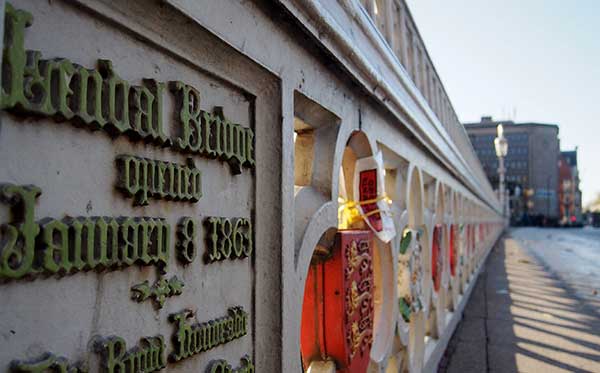
Lendal Bridge Week
 We’re halfway through the six-month ban on private vehicles using Lendal Bridge between 10.30am to 5pm. This week YorkMix is running a series of articles from people with very different responses to the trial. What do you think? Comment below, Tweet us @theyorkmix or go to our Facebook page
We’re halfway through the six-month ban on private vehicles using Lendal Bridge between 10.30am to 5pm. This week YorkMix is running a series of articles from people with very different responses to the trial. What do you think? Comment below, Tweet us @theyorkmix or go to our Facebook page
 York author and consultant Alan Gillott explains why he fears the city is becoming a no-go area for those who can’t walk far
York author and consultant Alan Gillott explains why he fears the city is becoming a no-go area for those who can’t walk far
The closure of Lendal Bridge is impacting the lives of citizens. Taxi drivers and tradesmen are noting increased traffic, some roads are now experiencing greater levels of pollution and the disabled and semi-ambulant are finding it harder to negotiate their daily lives.
Taxi drivers say they’re not happy with the increased journey times and general chaos. And tradesmen are equally unhappy as their journey time from client to client has increased considerably, leading to missed appointments and loss of income.
Lowther Street has seen a considerable increase in traffic, forcing people to close their windows to keep out the resulting pollution. Planning documents predict this particular road will run out of capacity by 2015 – the changes mean it’s already well on its way.
Extending the no-go area
The closure has moved a pollution blackspot from the retail area of Gillygate to residential Lowther Street, which is also home to a primary school. To be fair, however, traffic is now flowing faster along Bootham and Gillygate.
For semi-ambulant residents (those whose lives are shaped by the number of the steps they feel able to take on a given day), Coppergate and Tower Street are already virtually no go areas because of their traffic restrictions.
Yes, you can get there by taxi or, for the intrepid, by bus, but accessibility doesn’t always equate to comfort and convenience for someone who is disabled or semi-ambulant.
Closing Lendal Bridge has now extended the no-go area to Rougier Street, Micklegate, the shiny new council offices, where the disabled have to go for their bus and parking passes, and the railway station.
Making life a painful struggle
The council has also blocked access to the footstreets from Blake Street and Museum Street, creating an enormous no go area for anyone with disabilities and for the semi-ambulant, who will avoid any area they feel they might have trouble negotiating on a bad day.
York’s footstreets were previously set up so that nowhere was more than 100 to 150 steps away from an accessible road. There have been times when I’ve had to drive into town to rescue my wife, who is semi-ambulant, when she’s literally run out of steps.
Now she will have to struggle painfully to the bus stop in Museum Street or Stonebow to wait for the number six bus – the only one that serves both ends of the footstreets.
My wife, an events organiser, no longer feels able to arrange business meetings in key areas of the city – Guildhall, City Screen, the over-60s’ centre – or simply pop in to Boots, WH Smith, Browns, the market or her bank. She can’t, in effect, do her job.
Public transport not the answer
Understanding the hurdles faced by someone who has a physical impairment is genuinely difficult for those who are fully functional. Taking a taxi, for example, seems obvious, but it’s an expensive option, particularly for people whose income is limited by their disability.
Buses are wonderful when they run but, for some in our community, the jerking stop-start motion can be extremely painful, the queuing nigh on impossible and, occasionally, the drivers extraordinarily unhelpful.
Just consider the feat of scheduling it takes for a disabled person to make it to the railway station at a particular time. The bridge closure and footstreet blockages mean the journey inevitably takes longer than before.
Opt for a taxi and you’re assuming it will arrive on time without the driver getting stuck in traffic elsewhere. A bus is also possible as long as you make sure you’re at the stop at least 30 minutes before the scheduled service in case it doesn’t run.
And, to cap it all, if you have a disabled seat on the train, East Coast insists you turn up at least 30 minutes before the scheduled time of departure.
The supposedly simple act of catching a train can, therefore, take many hours out of your day. And there’s still no guarantee you’ll make it through the traffic on time, so you have to factor in the additional stress and monetary cost of missing it altogether.
For those on an already limited budget, the government’s “we haven’t figured out how to run a railway yet” tax for missing a train is the last straw. City of York’s “cripple tax” to cross the bridge is, sadly, the cheaper option.
- Read all our Lendal Bridge stories here
